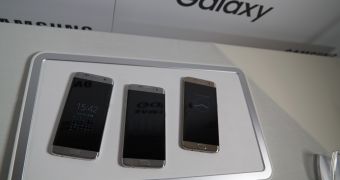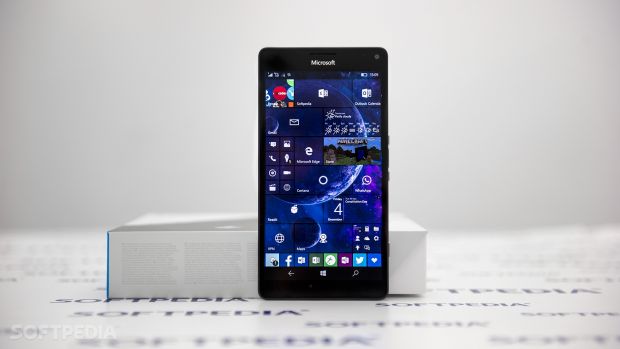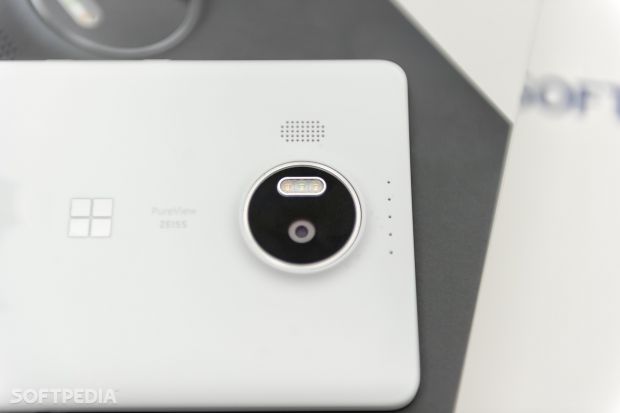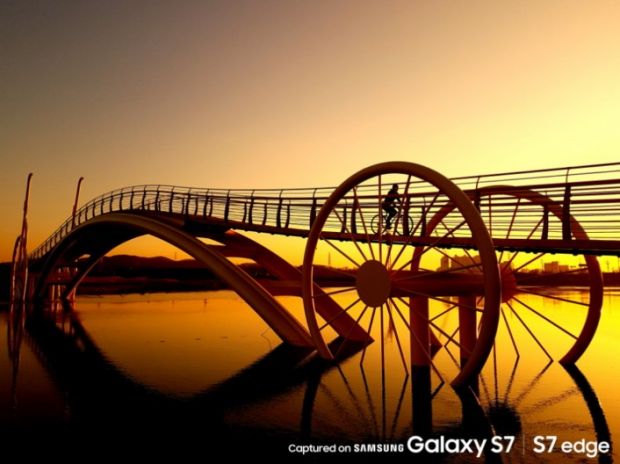Samsung has just debuted its new Samsung Galaxy S7 lineup, which includes both the standard 5.1-inch and the 5.5-inch Edge models, with shipments to begin in early March in the United States and in several key European markets.
As far as the Samsung Galaxy S7 Edge is concerned, this particular version competes against high-end models from Apple, Microsoft and others, and at first glance (no pun intended, you’ll see later why we’ve said that), it seems to have what it takes not only to face the challenge but also to win it.
While it’s pretty clear that, when put against the iPhone lineup, the Galaxy S7 doesn’t disappoint, it’s interesting to see how the bigger Edge competes with the best Microsoft has to offer right now, which is the Lumia 950 XL.
As Windows Phone fans already know, the Lumia 950 XL is the flagship of flagships in the Windows portfolio, so it’ll also compete against the S7 Edge in the high-end phablet business.
Since the Galaxy S7 Edge is the newer model on the market, it’s only natural to expect it to come with better hardware and technical specifications, but the Lumia 950 XL isn’t an old model either. It was unveiled on October 6 and went on sale in the US and around the world the following month.
#Dimensions and weight
When we reviewed the Lumia 950 XL, we told you that Microsoft made an excellent job of reducing the phone’s bezels, as the phone does come with a 5.7-inch display, but somehow it is smaller than the iPhone 6s Plus, which has a 5.5-inch screen.
In this case, the S7 Edge is not only smaller but also lighter, so it uses the 5.5-inch display advantage in a very effective way. The Lumia 950 XL measures 151.9 x 78.4 x 8.1 mm (5.98 x 3.09 x 0.32 inches) while the S7 Edge has the following dimensions: 150.9 x 72.6 x 7.7 mm (5.94 x 2.86 x 0.30 inches).
Microsoft’s flagship weighs 165 grams whereas the S7 Edge tips the scales at 157 grams. The difference isn’t huge, but Samsung has managed to keep the weight down, despite the new materials and technologies packed under the hood.
| Lumia 950 XL | Galaxy S7 Edge | |
|---|---|---|
| Dimensions | 151.9 x 78.4 x 8.1 mm (5.98 x 3.09 x 0.32 inches) |
150.9 x 72.6 x 7.7 mm (5.94 x 2.86 x 0.30 inches). |
| Weight | 165 grams | 157 grams |
#Display
As mentioned before, Lumia 950 XL comes with 5.7-inch AMOLED screen with 16 million colors and a resolution of 1440x2560 pixels. It uses Corning Gorilla Glass 4 for protection and features Glance screen, the super cool feature that keeps the watch always on and shows missed notification in standby mode.
The S7 Edge comes with a 5.5-inch display with the same resolution as the Lumia (1440x2560 pixels), but also comes with curved edges, which opens the door for several new features, some of which are already available on its predecessor. It features Corning Gorilla Glass 5 protection.
And what’s also very important is that, starting with the Galaxy S7 lineup, Samsung has its very own Glance screen called “Always-on display,” which shows the clock, the calendar, and missed notifications when the phone is locked. Furthermore, Samsung provides several customization features, including different display modes (analog/digital) and a bunch of other tweaks.
| Lumia 950 XL | Galaxy S7 Edge | |
|---|---|---|
| Display | 5.7-inch AMOLED 1440x2560 pixels |
5.5-inch Super AMOLED 1440x2560 pixels |
| Features | Gorilla Glass 4 | Gorilla Glass 5 |
#CPU, RAM, and storage
This is where the new hardware really makes a difference. Even though Lumia 950 XL is quite a productivity workhorse thanks to its hardware, the Galaxy S7 Edge comes with the best currently out there.
Samsung offers two different CPU options, depending on the region: Qualcomm Snapdragon 820 or Exynos 8890 processor - octa-core (2.3 GHz quad-core + 1.6 GHz quad-core) and quad-core (2.15 GHz dual-core + 1.6 GHz dual-core), respectively. These are the most powerful chips currently available on mobile devices and clearly outclass the Snapdragon 810 available on the Lumia 950 XL.
Until now, Lumia’s 810 has been among the best options, but as we’ve told you several times before, Microsoft’s flagship doesn’t truly make the most out of it due to the still-limited performance of Windows 10 Mobile.
Furthermore, Samsung’s new model comes with 4 GB of RAM while the Lumia features only 3GB RAM. In terms of GPU, the Galaxy S7 Edge comes equipped with an Adreno 530, an improvement over Lumia’s Adreno 430.
The two devices are almost identical in terms of storage, as the Lumia 950 XL comes with 32 GB of built-in storage + microSD card support while the S7 Edge is offered in two versions, 32 GB and 64 GB, with microSD card support as well.
#Camera
On paper, the Lumia 950 XL seems to outclass the new Galaxy S7 Edge when it comes to cameras, but as we know, it’s not all about the specs, but more about technology and performance.
Lumia 950 XL comes with a 20-megapixel camera with Carl Zeiss optics, OIS, f/1.9 and 1/2.4” sensor size and 1.2 um pixel size. The S7 Edge features a 12-megapixel unit with f/1.7 and 1/2.6” sensor size, 1.4 um pixel size, OIS, and LED flash. The Lumia 950 XL uses a triple-LED RGB flash that performs very well in low-light conditions.
To compensate in low-light conditions, Samsung has developed what it calls a “Dual Pixel image sensor,” which has the role of splitting every single pixel into two different photodiodes for a process called on-chip phase detection. In plain English, this means that the auto focus is significantly improved because the light is sent from the lens to two image sensors. This way, the focus is made not only on just one object but also on the surroundings.
This feature is practical in low-light conditions but is also helped by the F1.7 aperture, which should provide 25 percent more brightness as compared to the S6.
Other than that, the phones’ cameras can video record in 4K while the front-facing 5-megapixel units offer 1080p support too (Samsung offers better brightness with F1.7 aperture, versus F2.4 on the Lumia).
#Battery and charging
Lumia 950 XL comes with a 3340 mAh battery that easily gets you through the day and can sometimes go up to 48 hours with average users. On the other hand, the Galaxy S7 Edge features a non-removable 3,600 mAh battery, whose performance figures are not yet known.
The Lumia 950 XL comes with a USB Type-C port, which is close to becoming the new standard in mobile while the Galaxy S7 (both the standard and the Edge) come with micro USB. To compensate for this, Samsung Galaxy S7 Edge comes with fast charging, which should provide up to 83 percent of battery life in 30 minutes thanks to the patented Quick Charge 3.0.
The bottom line
Clearly, Samsung Galaxy S7 Edge is one of the top choices in the Android business right now and probably fights against the Nexus 6P for the supremacy in this particular market.
But when competing with the Lumia 950 XL, the Galaxy S7 seems to be the better choice, not necessarily thanks to the operating system, but because this remains a subjective thing, and while some claim that the lack of apps on Windows Phone is not a problem, others just can’t live without apps.
In terms of hardware, however, the Galaxy S7 Edge simply excels, and although it does lack some features available on the Lumia, such as iris scanning, it does come with others to compensate.
An in-depth look at the Galaxy S7 and an update to this article will be made next month, when we’ll receive our test unit and we can make a closer analysis of the device.

 14 DAY TRIAL //
14 DAY TRIAL // 





